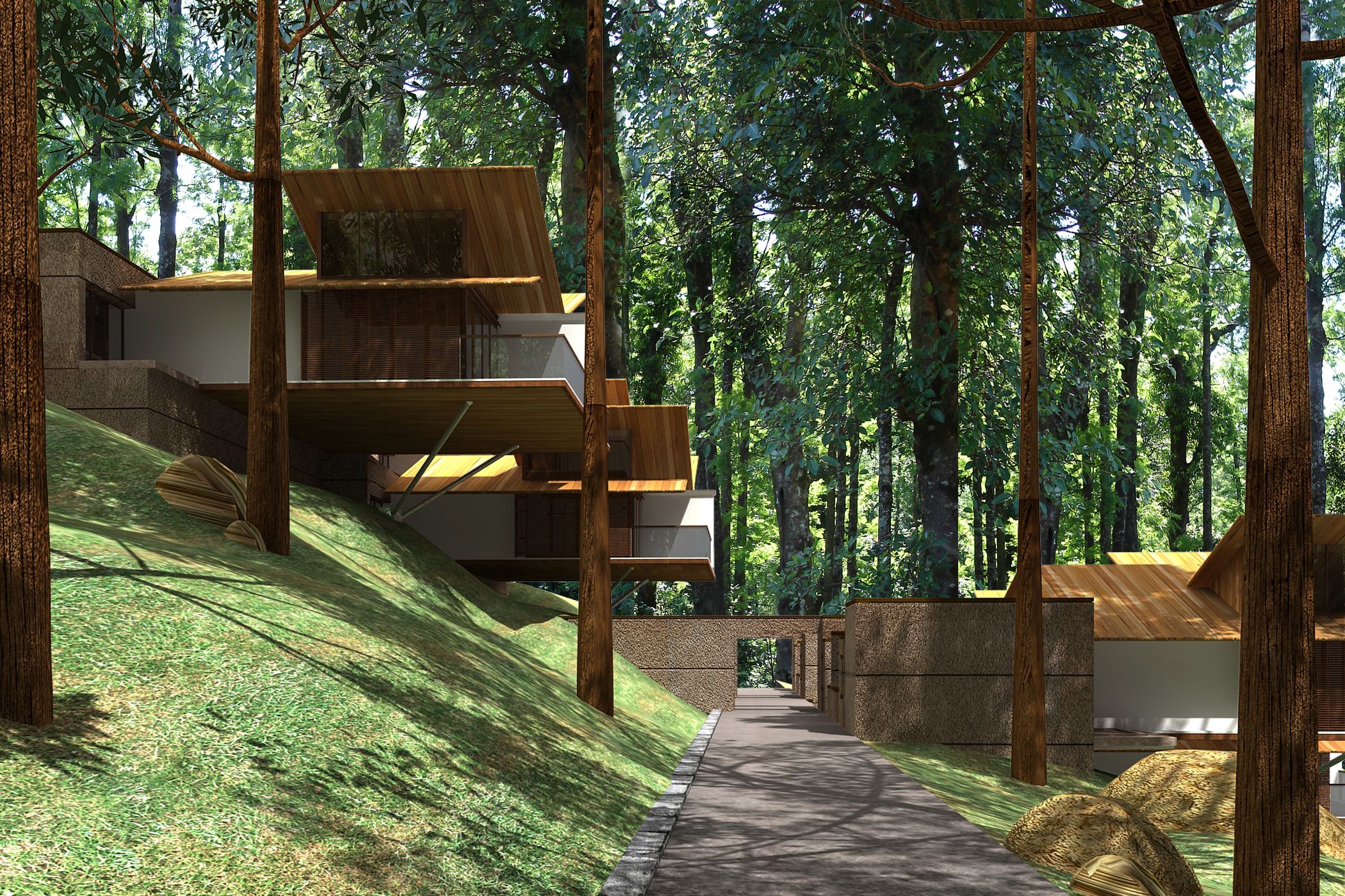This resort complex contains two brands run by the same company: (1) “Banyan Tree”: a super-luxury resort where everyone stays in a private villa with its own plunge pool; and (2) “Angsana”: also a luxury brand but at higher densities than Banyan Tree. A destination spa and specialty restaurant serve both brands.
The site is extremely unusual: fifty-two acres and a very steep slope with a 180-metre level difference between the high and low points, with some of the valleys containing an indigenous forest type called “Shola”. This dramatic character presents three major aspects:
- A sense of hovering above and away from the daily routines of earthly life
- The steep slope gives the sky an unusually dominant presence
- Views in both directions are spectacular, with a rock cliff at the top of the site.
While the conventional design approach to such resorts is to use ethnic themes, it was decided that would not be appropriate here. The site is so powerful that it was left to express itself by designing highly contemporary buildings that sit lightly on site. Villas were conceived as structures that are cantilevered off the face of the slope, and larger buildings have a cascading set of horizontal roofs with transparency along the slope. Structural frames are made of steel that is fabricated in the plains and assembled on site: which helps the lightness of expression and makes construction on this steep terrain much easier.
The siting of buildings was based on an analysis by the landscape architect, taking into account slopes, vegetation and drainage patterns. By this method, the development could keep natural ecosystems intact. The valley in the centre of the site was left unbuilt so that the character of the land was explicitly visible, and the only structure crossing this portion is a lightweight bridge that carries the specialty restaurant that has spectacular views in both directions.
The project was won by CnT Architects in an invited international competition that attracted entries from India, South Africa, Singapore, Indonesia and USA. The project went up to the tender drawing stage before it had to be abandoned due to some legal complications on the land.








